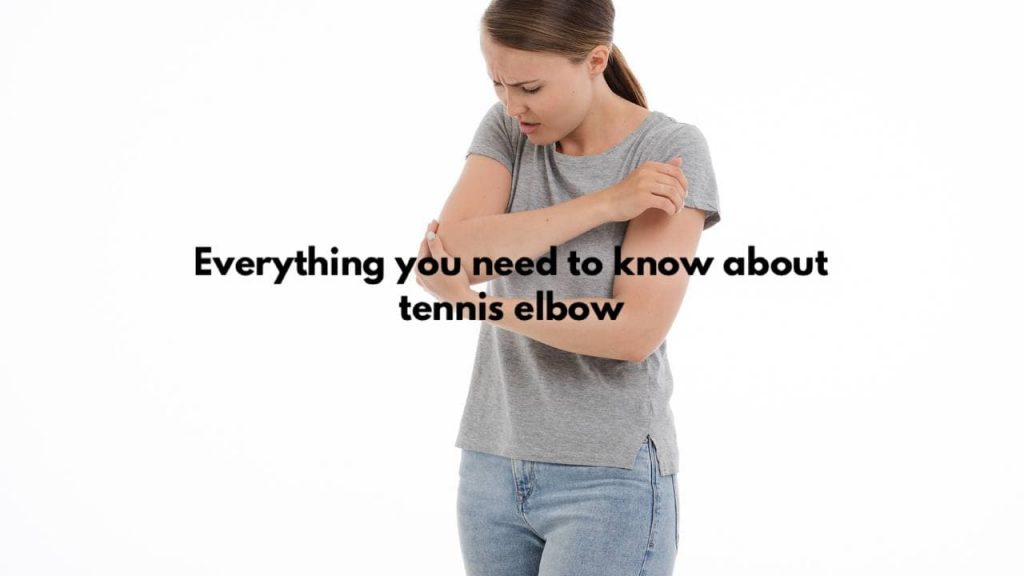With over 1 million orders

DR. ARTHRITIS SHARES: A COMPLETE GUIDE TO TENNIS ELBOW
The Doctor Arthritis team approached me to write a little piece on tennis elbow for them.
I am a qualified doctor and also played tennis at a competitive level during college and across the County/State circuit in my early twenties. Additionally, I am very susceptible to tennis elbow. All things considered, I am perhaps uniquely qualified to write about this topic specifically. I will try to make it as jargon free as possible and also try and share some practical pointers that helped me mange my condition.
If you do have any questions at all about tennis elbow just email enquiry@doctorarthritis.org and they will forward it on to me!
What is tennis elbow?
Doctors will refer to tennis elbow as ‘lateral epicondylitis’. What this really means is inflammation where the muscle tendons of your forearm attach to the outer part of your elbow (lateral epicondyle). The muscles associated with these tendons are responsible for extension of your wrist (bending back your wrist). It most commonly affects one tendon in particular – extensor carpi radialis brevis (ECRB).
How common is tennis elbow?
Tennis elbow affects 1-3% of the adult population at any one time. It is most common in your forties and fifties with men and women affected equally.
Do I have tennis elbow?
Mill’s test (below) can be used to help test if you have tennis elbow. If you find the instructions tricky to follow just search ‘Mill’s test’ into YouTube and there are loads of great videos!
-
Straighten your arm and feel the lateral epicondyle (bony landmark).
-
Fully flex your wrist (bend forwards).
-
Pronate your forearm (twist inwards).
-
Pain indicates you may have Tennis elbow.
What causes tennis elbow?
Despite its name, tennis elbow isn’t exclusively caused by playing tennis. Although funnily enough, I actually got my tennis elbow from playing tennis.
It is generally caused by overuse of the muscles and tendons around the elbow joint. Overuse of the muscle leads to tiny microscopic tears which can be symptomatic. Commonly culprits include activities that involve repetitive movement e.g DIY, gardening, gym etc.
What are the symptoms of tennis elbow?
Symptoms come on gradually affecting your dominant arm in 75% of cases (mine was actually in my non-dominant arm – hitting too many double handed backhands!). There is pain and tenderness in the bony landmark at the outside of your elbow which is made worse during activity. In severe cases, the pain can even spread up and down your arm.
How do I treat tennis elbow?
The main thing is to stop the activity which is causing the tennis elbow. I was off the tennis court for 6 weeks when it was most severe. Rehabilitation exercises can also be extremely beneficial and you can find some of these in the ‘Dr. Arthritis Elbow Handbook’. Steroid injections are quite popular amongst athletes. These can provide great short term benefit but unfortunately will not help in the long run. There are some newer treatments being researched including injecting blood products, hyalouronan gel and botulinum toxin therapies. However, many of these new treatments still need to be proven effective!
How long does it take to clear?
It really depends on how quickly you stop the triggering activity. If you stop it immediately it may be a matter of weeks until you are fully recovered. However, in most cases it takes much longer. The good news is that 90% of sufferers will fully recover within a year with others requiring more invasive management options such as surgery.
My Top Tips for Racket sports players
I have compiled a few tips for racket sports players, which I found really useful over the years. These have helped me in preventing tennis elbow and reducing the likelihood of an episode reoccurring.
Get a right sized grip
Too small a grip on your racket may actually contribute to tennis elbow. Try adding an overgrip, it may be the solution you need. However be careful not to overdo it as some people have reported tennis elbow from a grip that is too big!
Don’t squeeze too tightly
Many players squeeze their racket far too tightly. In fact you only really need a firm grip on your racket during contact with the ball.
Get a damper/shock absorber
A damper or shock absorber (a small device that sits at the bottom of your racket head between the strings) can make all the difference. They’re available for one or two dollars and can greatly reduce the vibrations travelling through your forearm.
Change your strings
Some of the newer strings, which often are very tough and durable, can increase the vibrations travelling through your forearm. Speak to your stringer and ask them to string your racket with softer strings such as synthetic gut.
The balls
Play with new pressurized balls. As you know, old wet balls can be heavy and strain your body.
Ease back in slowly
After a tennis elbow slowly build up the amount you’re playing. Start with once a week and build up from there!
Elbow support
Get yourself an elbow support. Many players have greatly benefited from and a compression sleeve and may just be the ticket for preventing tennis elbow. Not to sound like a salesman but the Dr. Arthritis elbow support is a great support for tennis players. I still use it!
I hope you have found the above information helpful and I wish you the best in your tennis elbow recovery.
